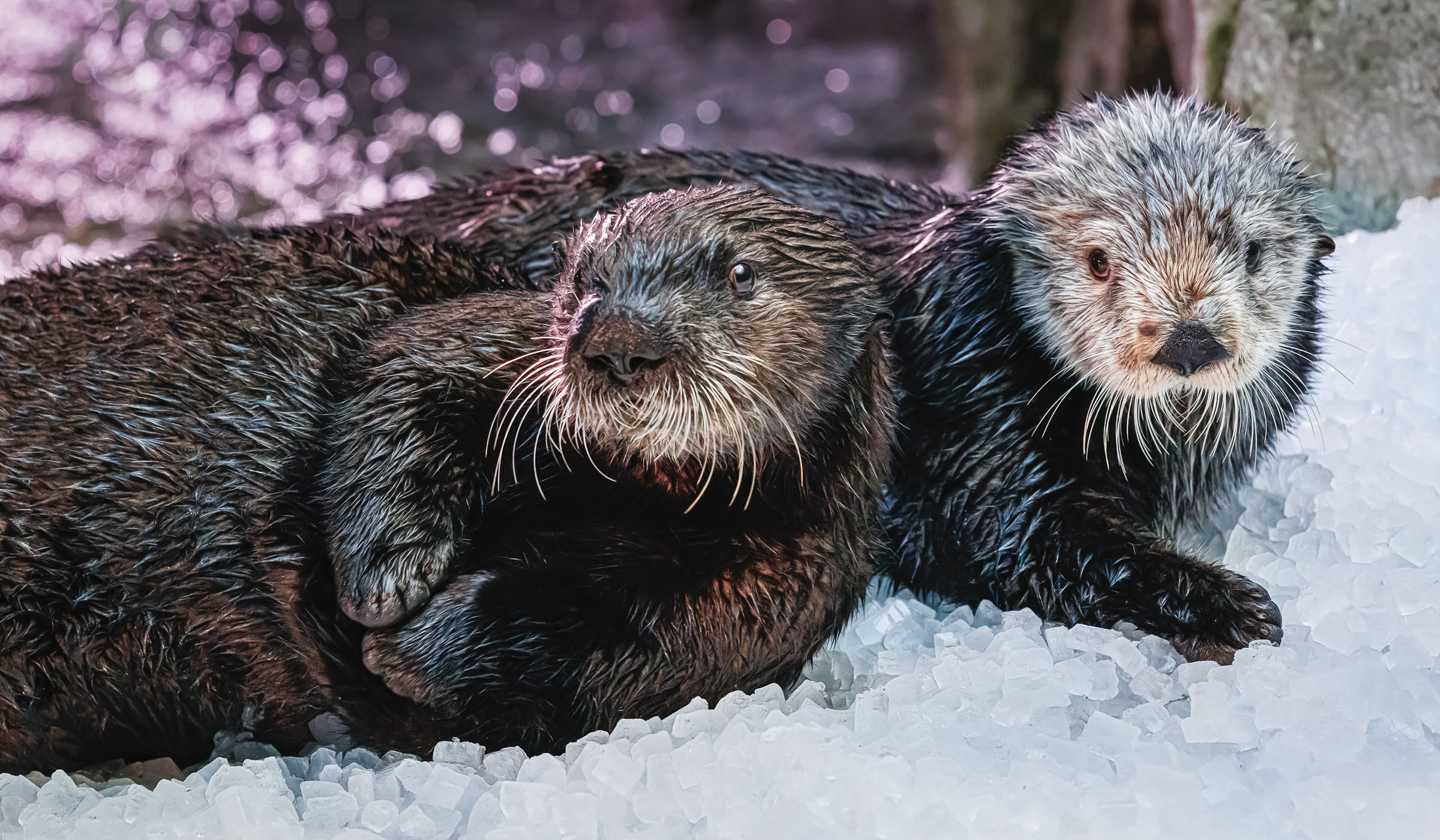
Healthy, Happy, and Thriving!
At 7:00 a.m. Megan Smylie, the Aquarium’s sea otter program manager, starts her day at the Aquarium greeting her Aquarium family. Her first task is to check in on the animals under her care.
After carefully ensuring everyone is doing well, she heads over to the food prep room where restaurant-quality food is selected and prepared for the animals. There she checks the whiteboards to see if any vitamins or medicines need to be added per the prescribed care of the veterinary team. After feeding time, next on the agenda could be scrubbing down an exhibit, conducting water changes, taking water samples for testing, or perhaps conducting a thorough assessment of an animal’s health and wellbeing.
Smylie is among more than fifty animal care staff members who are dedicated to the care and welfare of the animals at the Aquarium of the Pacific from the tiniest shrimp to the largest sea lion.
Our animals are the reason we exist, our connection to nature, and our inspiration to protect and conserve. The Aquarium is committed to not only the health of every single animal, but also their wellbeing. From visual checks every morning to in-depth conversations to create a plan to provide individualized care, making sure each animal in our collection is healthy, happy, and thriving is our top priority.
The Aquarium’s animal care team has a powerful bond with the animals. Our water quality lab ensures the water in exhibits is safe and meets all the needs for the various animals. The veterinary staff provides state-of-the-art medical care ranging from wellness exams to major surgeries. Volunteers also provide support with everything from food prep to exhibit cleaning. And a cross-departmental Animal Welfare Committee reviews the results of detailed assessments and discusses any concerns.

Animal welfare is more than taking care of the animal itself. With a great deal of habitats involving water, the Aquarium has a life support team, which works around the clock day in and day out to make sure the habitats are healthy for the animals. Over the course of four shifts, the team checks the temperature, flow rate of the water, acidity levels (pH), salinity, bacteria, ozone, and phosphate levels for each habitat involving water. There are about 600 items that are checked every twenty-four hours through scheduled rounds.
Below is a window into a day in the life of animal care at the Aquarium.
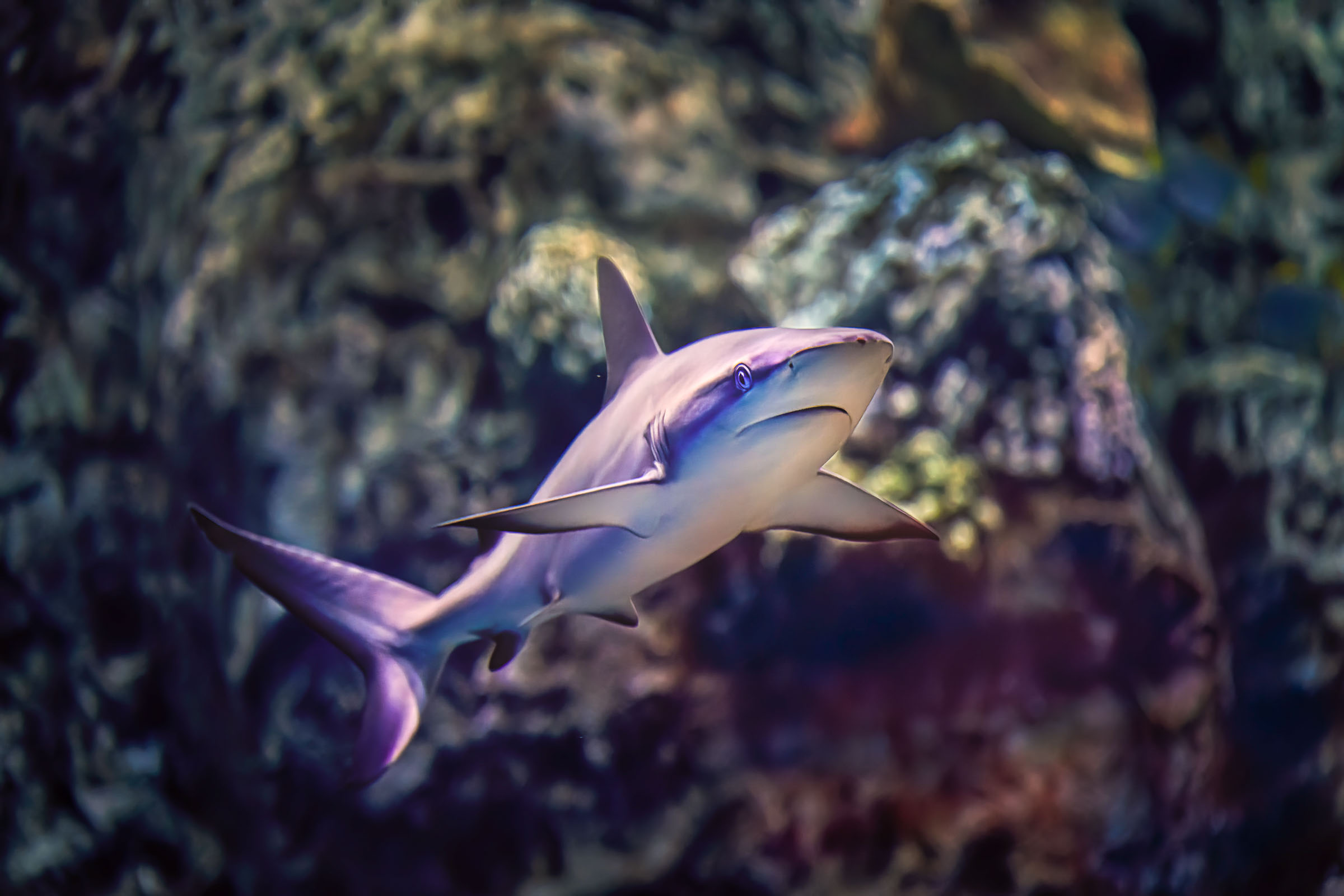
Grey Reef Sharks: Welcoming New Members to the Family
New animals are introduced to the Aquarium and new habitats for a variety of reasons. In the case of two grey reef sharks that recently were added to the Tropical Reef Habitat, it was to help show an example of a healthy reef to our guests. One of the staff members that works with these sharks is Senior Aquarist Celeste Moen, who expressed “I’m excited to have a representative of this species to help show an example of a healthy and stable reef.”
All animals that arrive at the Aquarium go through a quarantine period to ensure they are disease-free and allow them time to adjust to their new home. The new sharks were monitored daily in quarantine until they were ready to join the others on exhibit. Specialized care for these young sharks is critical for their well-being.
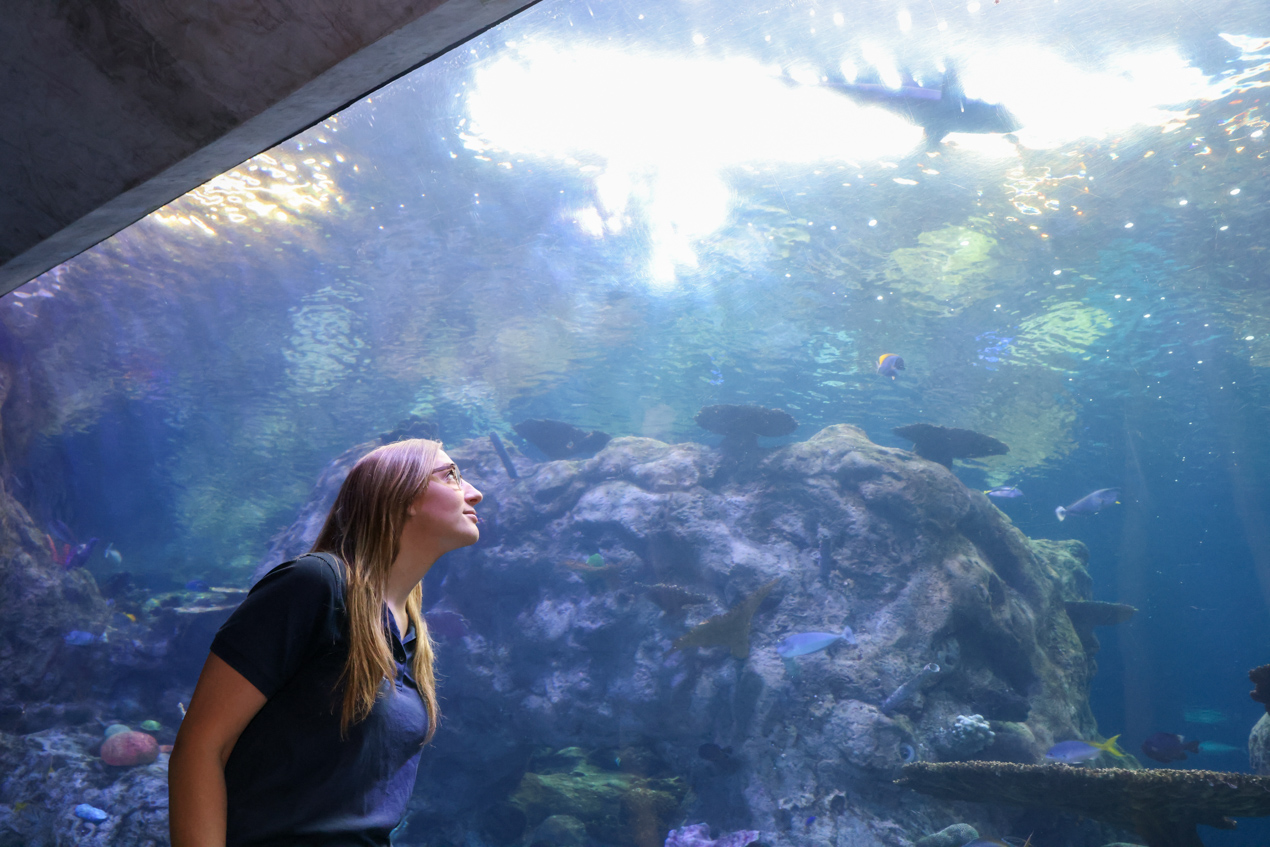
Each day, Moen makes visual checks to see how the sharks are swimming from both the guest perspective and from behind-the-scenes.
Six days a week, Moen feeds these sharks a specialized diet of sustainable seafood that is a specific percentage of their body weights. They are target trained to go to a specific place for feeding, making it easier for staff and engaging for the sharks. Each opportunity allows Moen to closely identify anything unusual in their behavior.
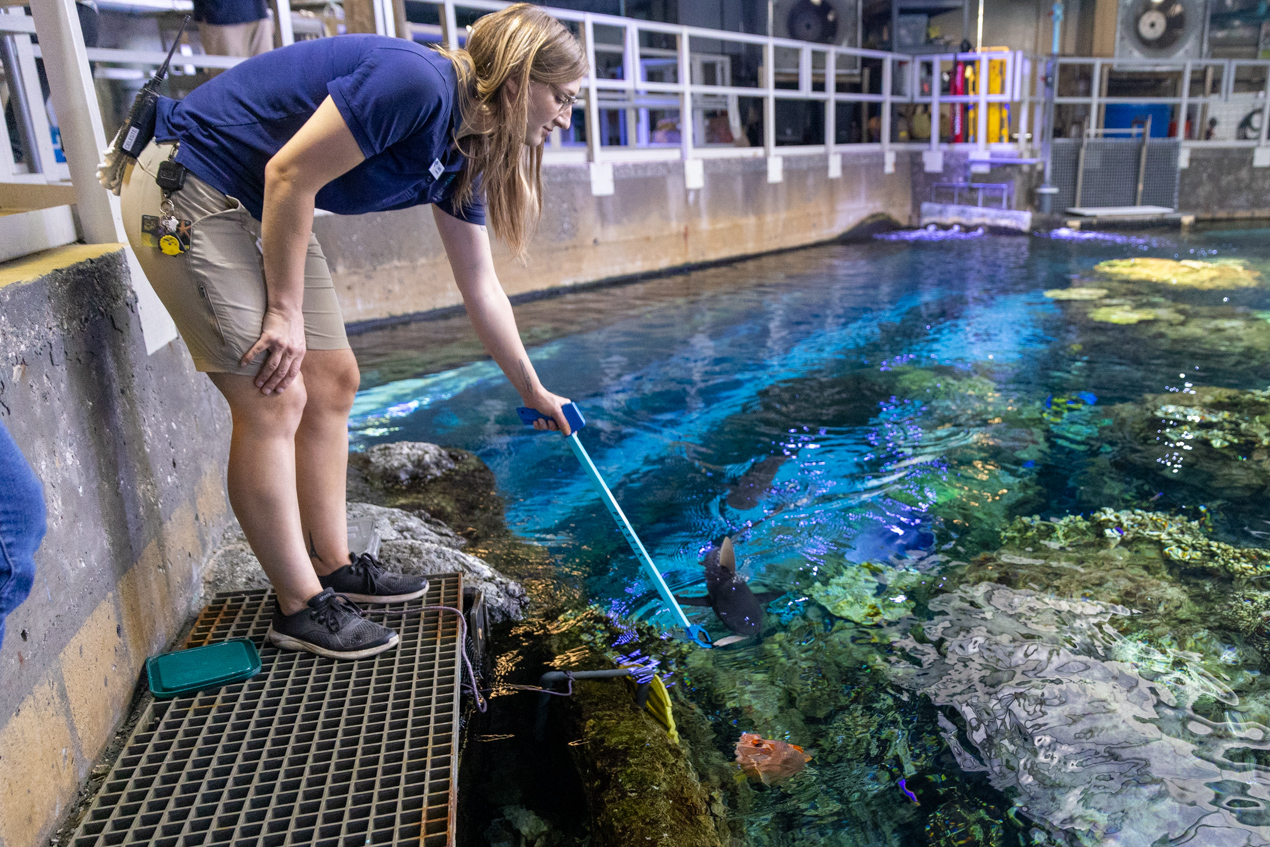
During these checks and feedings, Moen is observing specific parameters to help determine if these grey reef sharks are indeed healthy, happy, and thriving. She checks on their body condition, which includes weight, eye quality, and skin quality, and observing if the sharks are eating the food they are offered. For another parameter, she observes if the home these sharks live in is stimulating enough, asking the important question: “Are these sharks engaging with their environment?” Moen sometimes provides them with “chumsicles” to help encourage the sharks to engage with exploratory behaviors.
Moen is excited about these new additions because these two young grey reef sharks will eventually join the Aquarium’s older grey reef shark out at Shark Lagoon since this is a schooling shark species, and our goal is to get all three grey reef sharks to school together.
This future planning goes beyond caring for the animal daily but throughout their life.
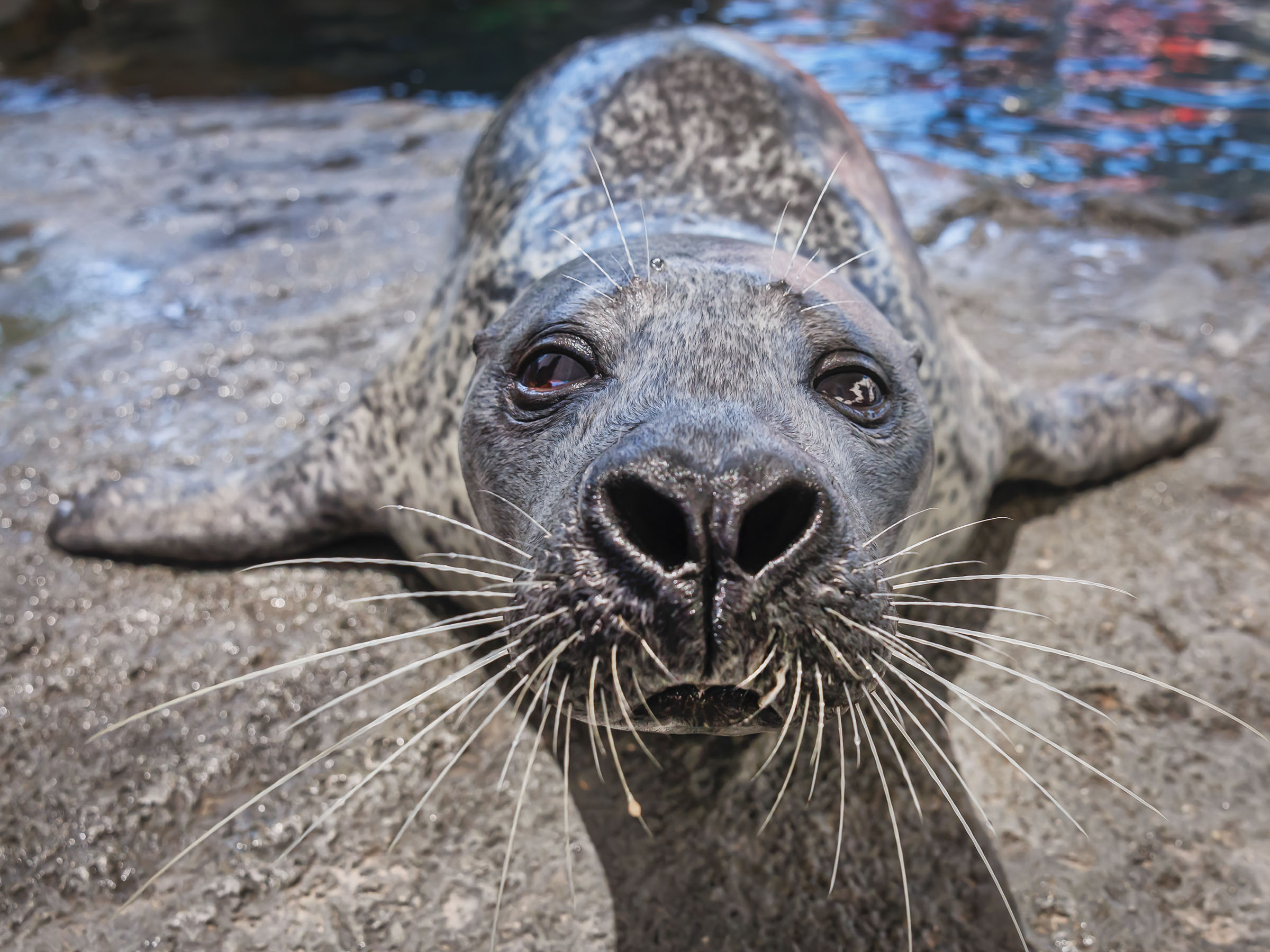
Ellie the Harbor Seal: Ensuring the Best Golden Years
One of the challenges of animal care is that the animals age much like humans. Older than the Aquarium itself, the 35-year-old harbor seal named Ellie has many of the same ailments that older humans face such as mobility challenges, visual impairment, and normal wear on teeth associated with age. Two of the animal care staff that care for Ellie’s needs are Mammalogists Amanda Torres and Erin Bell.
Torres and Bell work with Ellie to train specific behaviors to help get her used to various treatments such as voluntary vaccine injections, blood draws, eyedrops, ultrasounds, and x-rays.
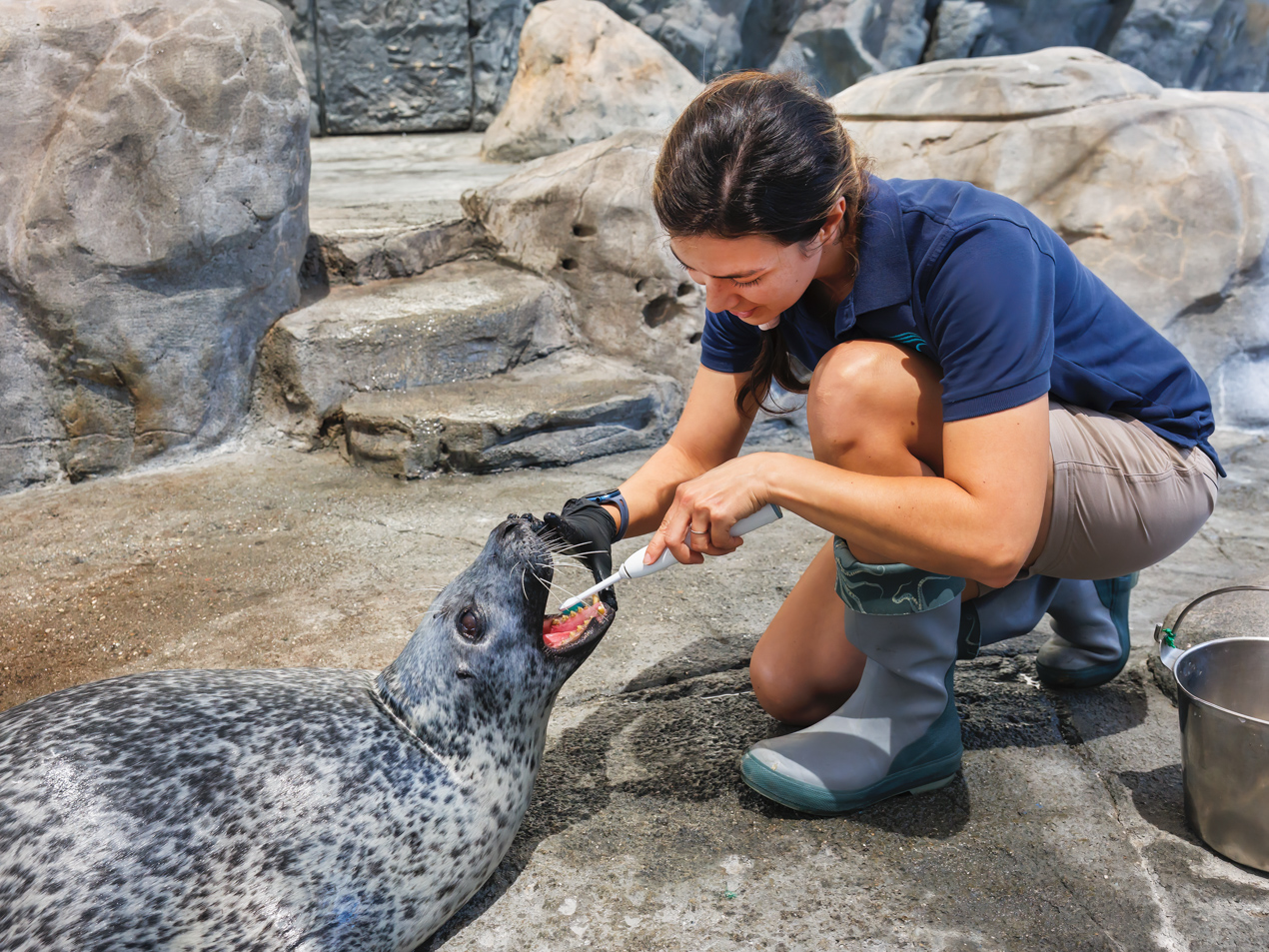
Torres and Bell also brush Ellie’s teeth every day. This helps when the veterinary team needs to interact with Ellie.
In addition, Torres and Bell observe Ellie’s interaction with the other seals and sea lions in the habitat and how she moves around the habitat. Torres, Bell and the team always try to keep Ellie's training sessions positive to help encourage her to participate in her health care routine. Sometimes they introduce novel food treats, like delicious sardines, to engage her more.
These activities are consistent with all the seals and sea lions, but Ellie has another level of care because of her age. This introduces a monthly geriatric assessment, which ensures the best care is provided for Ellie. To track progress and identify if an animal's needs have changed, mammalogists such as Torres and Bell perform a geriatric welfare assessment monthly. Each welfare assessment is reviewed by the animal care team and management and can help facilitate discussions amongst the animal care team and the veterinary team to develop an action plan.
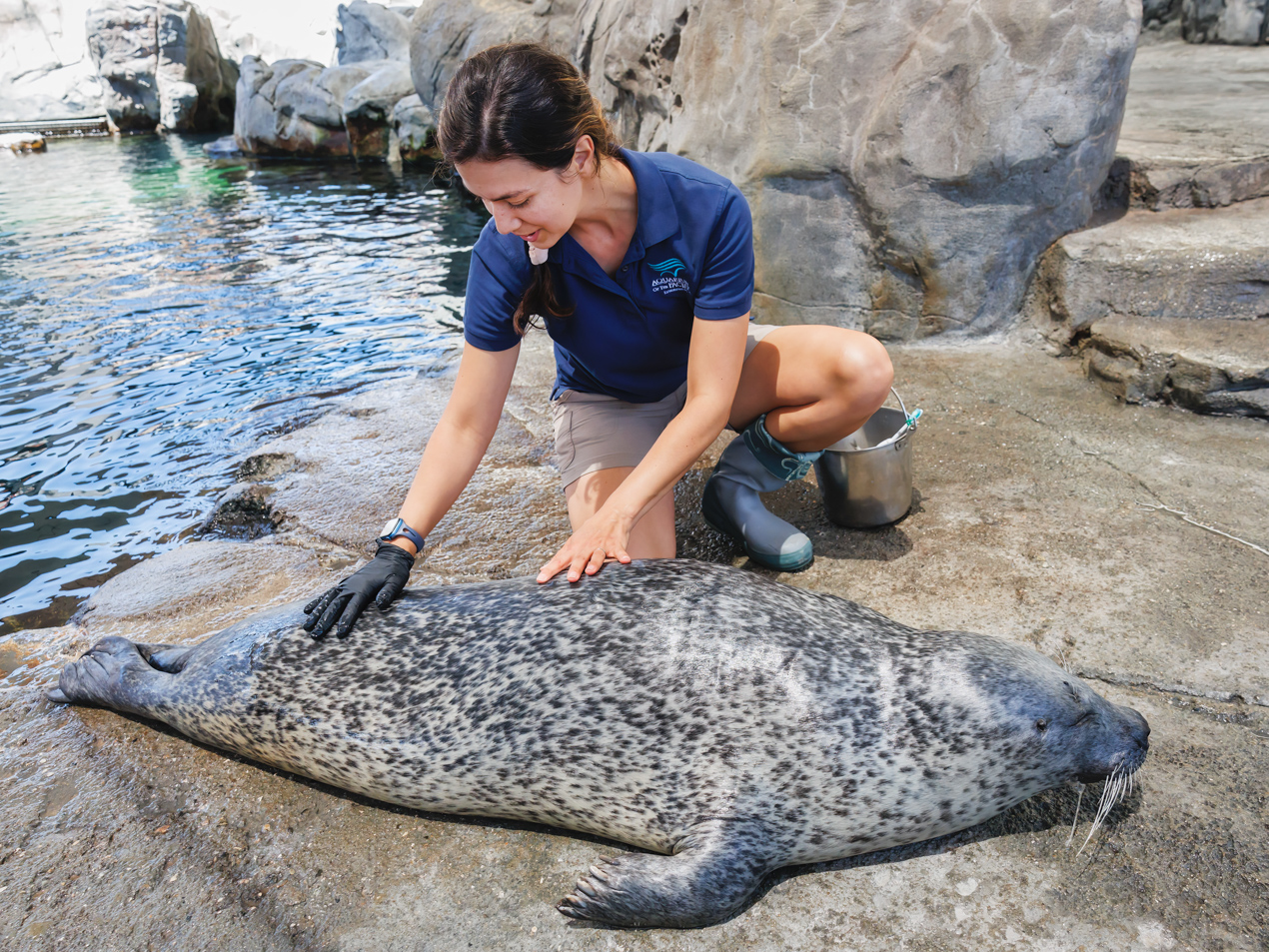
It can be a challenge taking care of geriatric animals because, according to Torres, “most animals will hide when they are sick or hurt.”
This means the team needs to continually remain on top of the care of older animals like Ellie. Through persistence, dedication, compassion, and creativity, the staff do everything possible to ensure Ellie is both healthy and thriving as she ages.
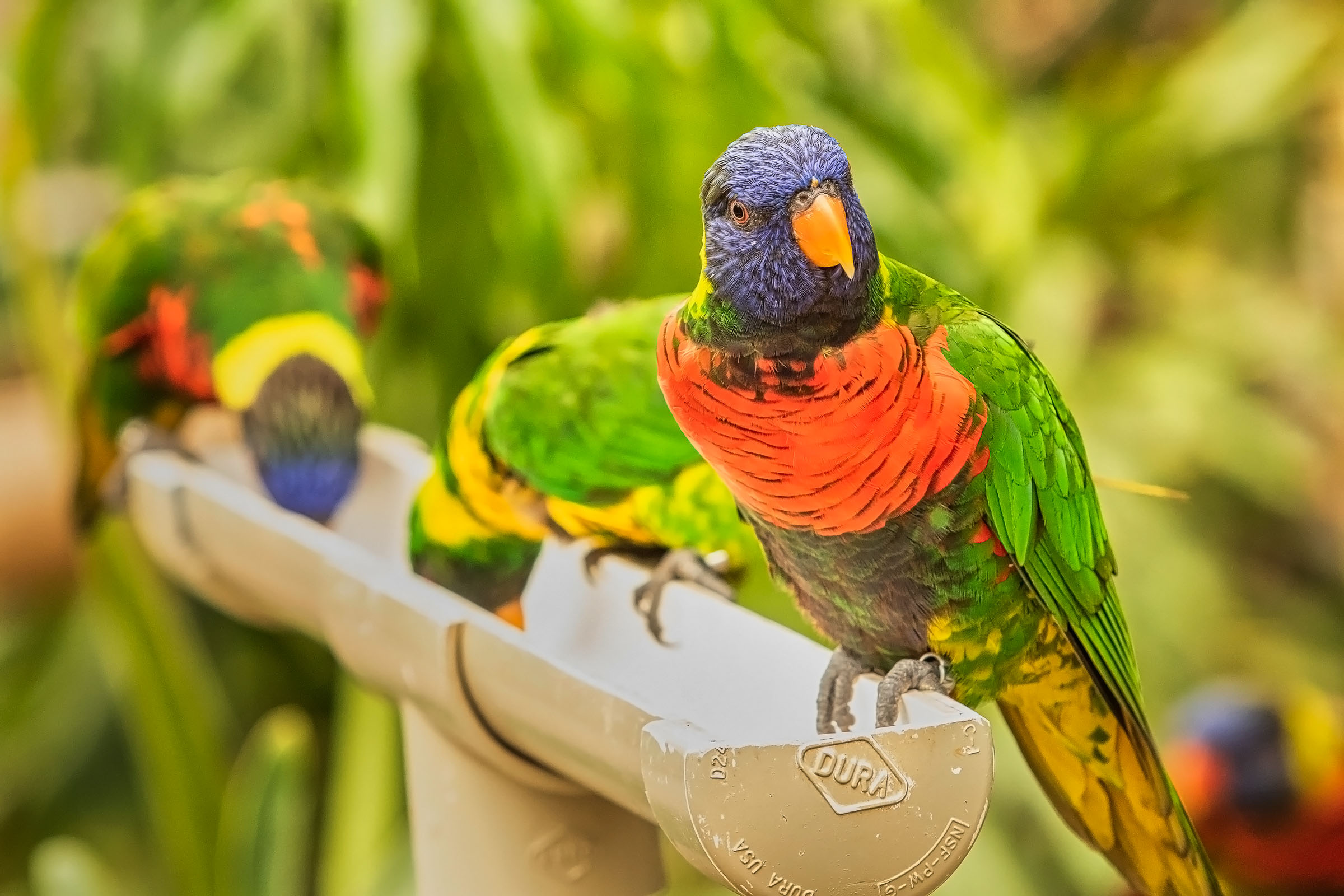
Lorikeets: One Big Happy Family
The Lorikeet Forest is home to about seventy-five to eighty birds. Keeping track and caring for this many birds requires a tremendous work for our aviculturists, or bird care staff. Each day the aviculturists check the whole exhibit. They look at each bird, checking for any unusual behaviors. During this process, the aviculturists will feed the birds, providing more chances to observe them up close. Heather Pens, a lead aviculturist at the Aquarium, describes healthy lorikeet behavior as “highly social.”
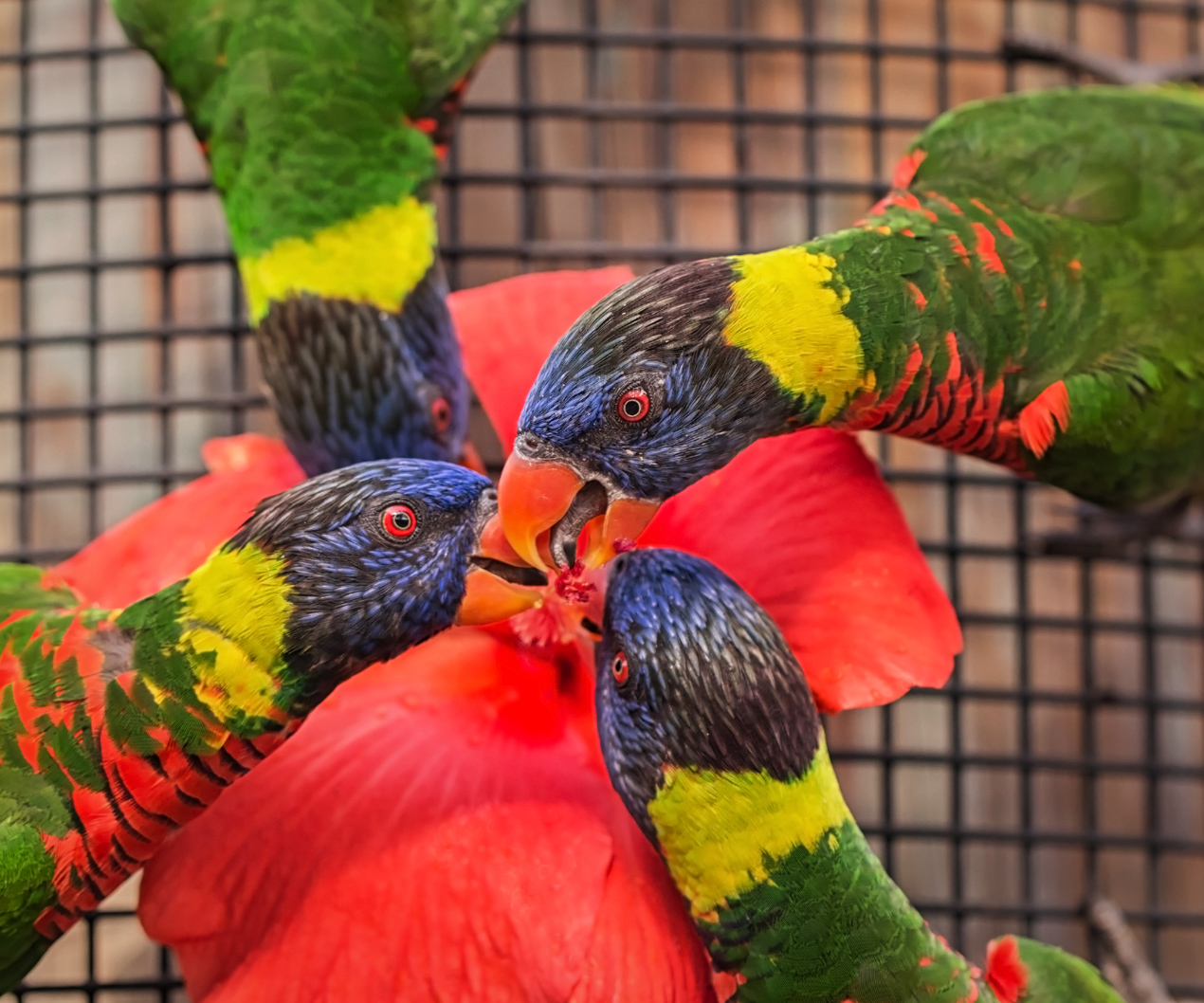
Lorikeets are a social bird species, and they feed in societal ranking, beginning with the more dominant individuals.
An example of an unusual behavior that would call for a team discussion is seeing a typically dominant individual lorikeet not feeding in its typical order.
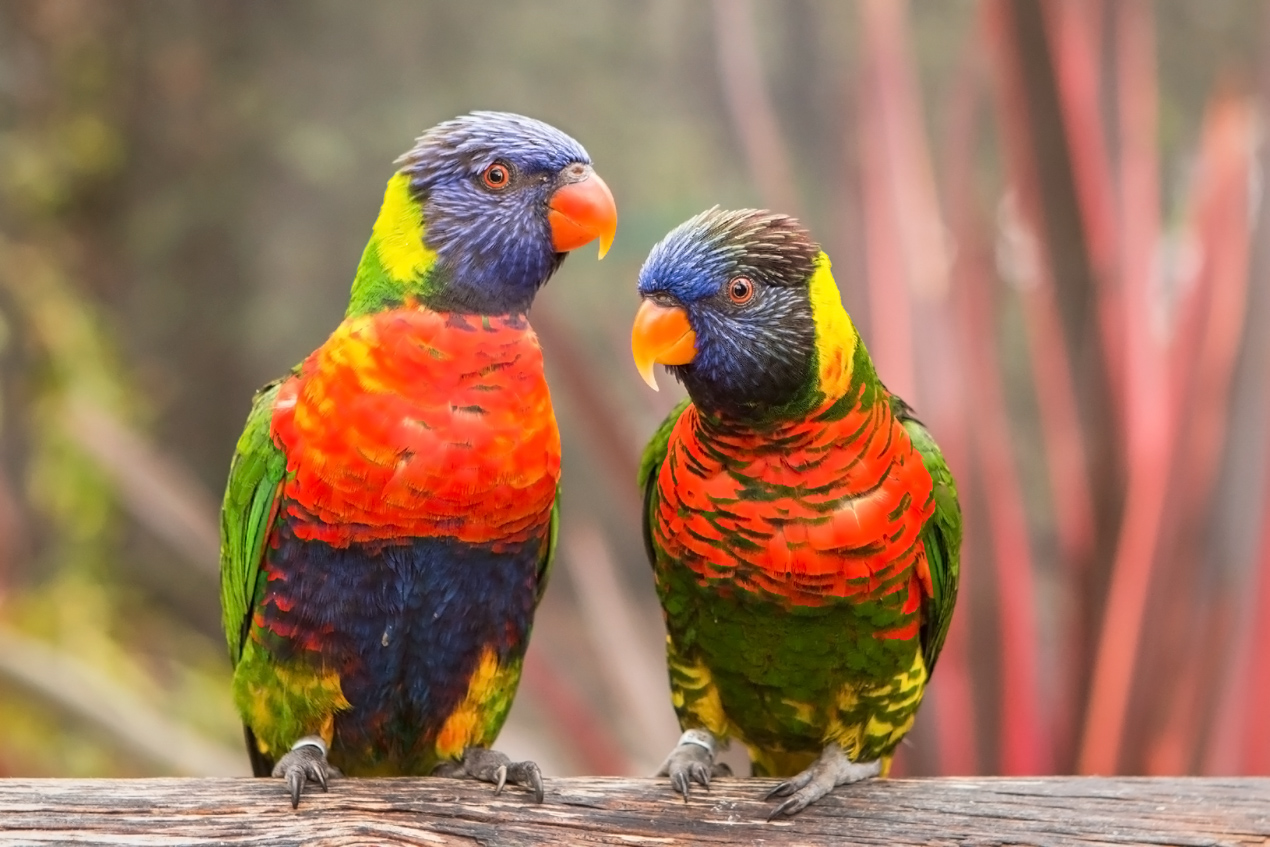
Throughout the day, the aviculturists observe the lorikeets playing, preening, bathing, and vocalizing—which are signs of happy lorikeets. Staff look out for any isolated or lethargic individuals. With close to eighty birds to observe, Pens uses a system that makes identifying them from a distance easier. Each lorikeet has a numbered band and a name. Pens has added colored cable ties to some birds, which helps identify behavioral tags, genetic viability for breeding, and birds that need extra observation for behavioral or medical reasons.
Care of the lorikeets also involves monitoring breeding activities. Successful breeding is a good indicator of their health and well-being. Recently, two scaly breasted lorikeets bred quickly after being introduced to a group of lorikeets behind-the-scenes. Their egg hatched and now is a fledgling learning how to be a lorikeet by socializing with other lorikeets. Pens remarked, “Breeding is the biggest compliment.”
When the birds can raise their young without staff assistance, we know we are setting up the best possible conditions for them to thrive.
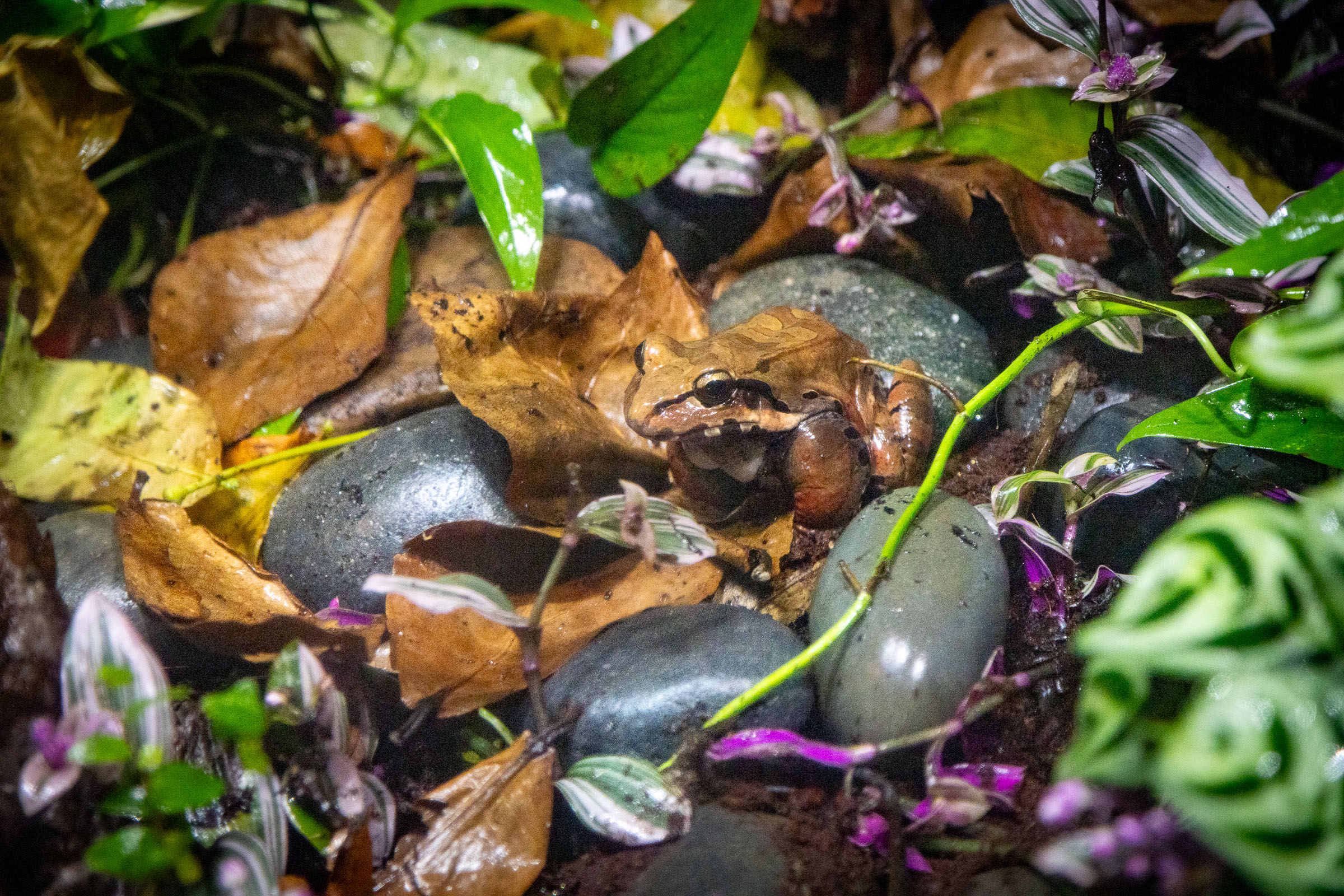
Smoky Jungle Frogs: A Living Home
In May 2024, the Aquarium reimagined and reintroduced its frogs and other amphibians in the exhibit FROGS: Facing a Changing Future. During this renovation, all the new habitats were converted to bioactive, which means everything in the habitat that could be a living organism is in fact a living organism thus completing a small ecosystem. Using bioactive habitats for the amphibians’ homes allows them to live in an ecosystem like their natural habitat, which in turn helps keep the amphibians happy, healthy, and thriving.
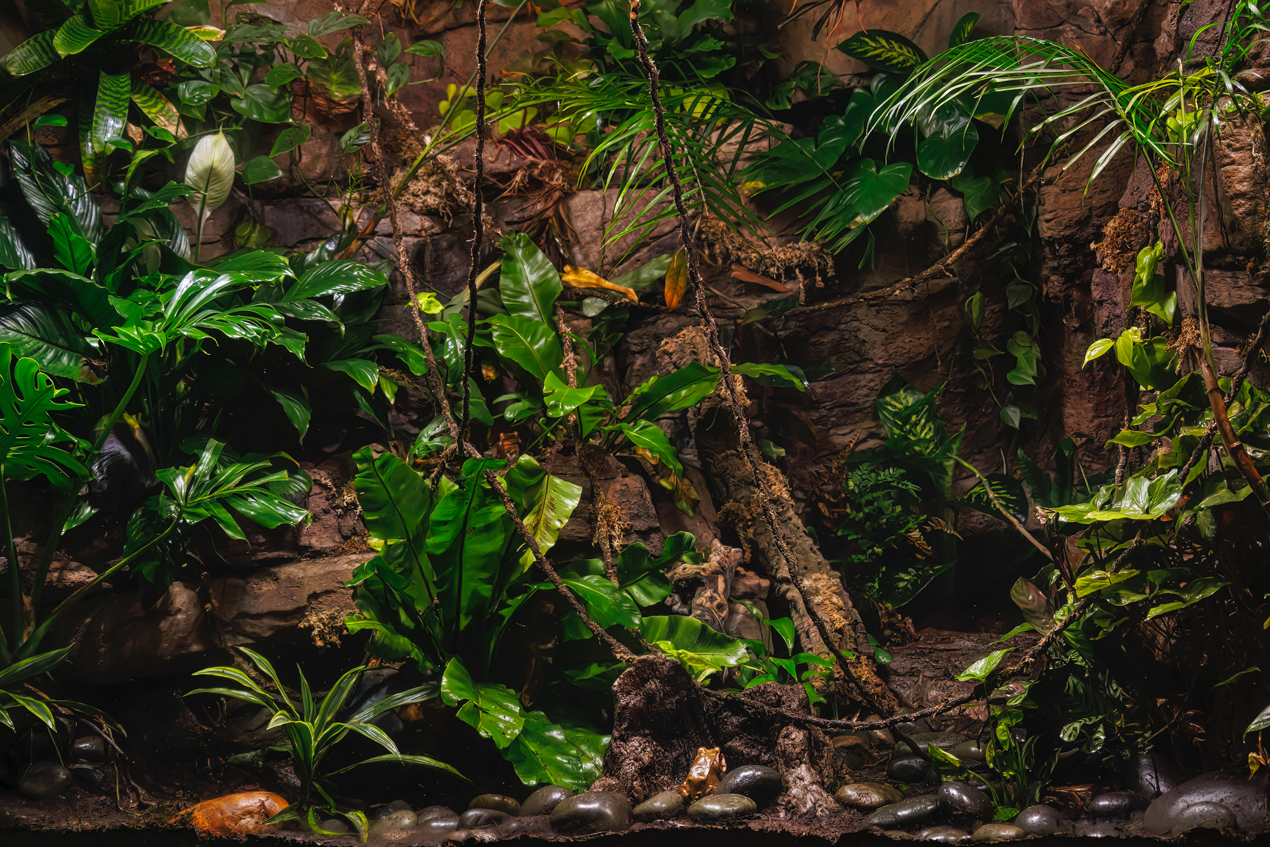
One of the largest is the smoky jungle frog habitat. It features over fifty different plant species native to South America and Costa Rica.
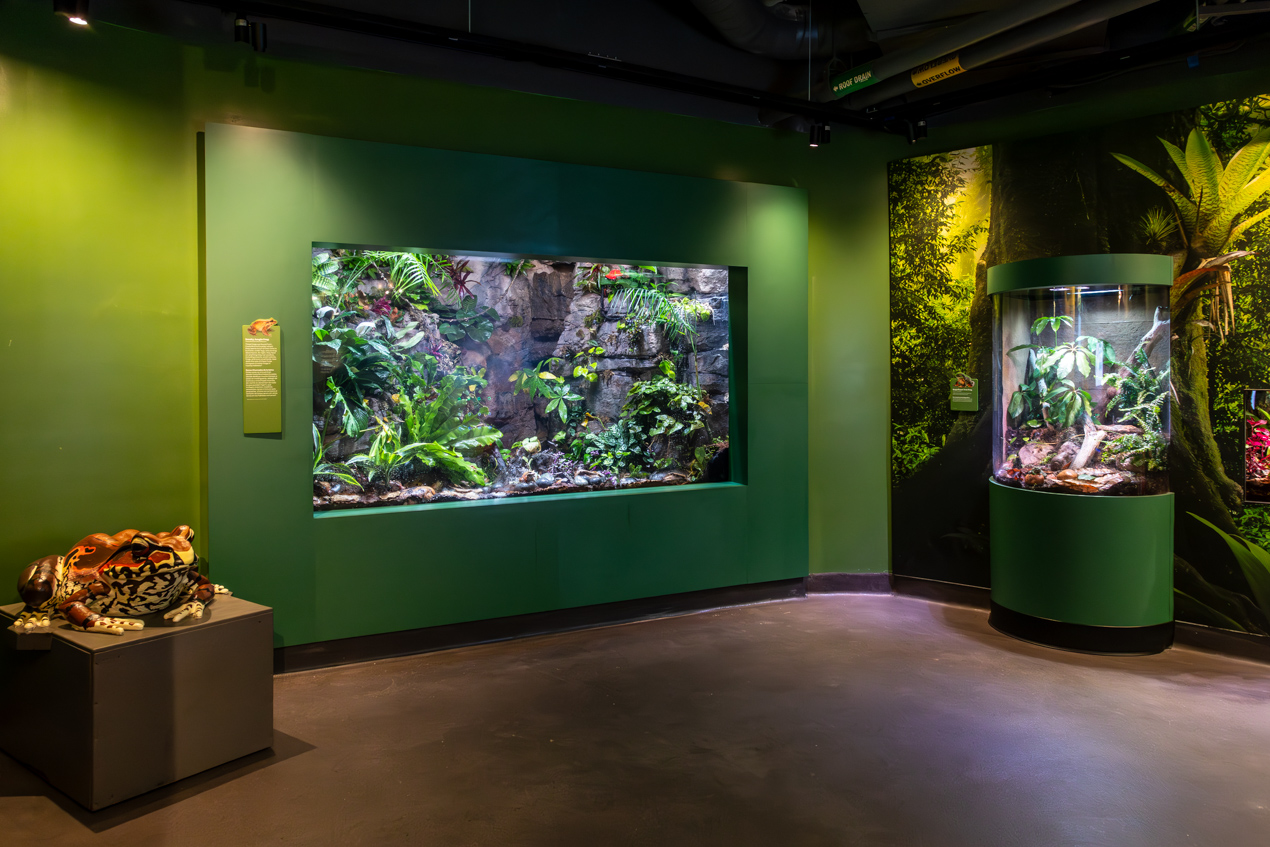
There are also decomposers that help take care of the waste in the habitat; these animals include isopods, springtails, and earthworms. The plants and the decomposers all support the primary animal—the smoky jungle frogs.
Erin Lundy, the manager of conservation initiatives, said, “…the quality of life for amphibians is related to the quality of the habitat.”
With biologically active components, sensitive amphibians like smoky jungle frogs can thrive.
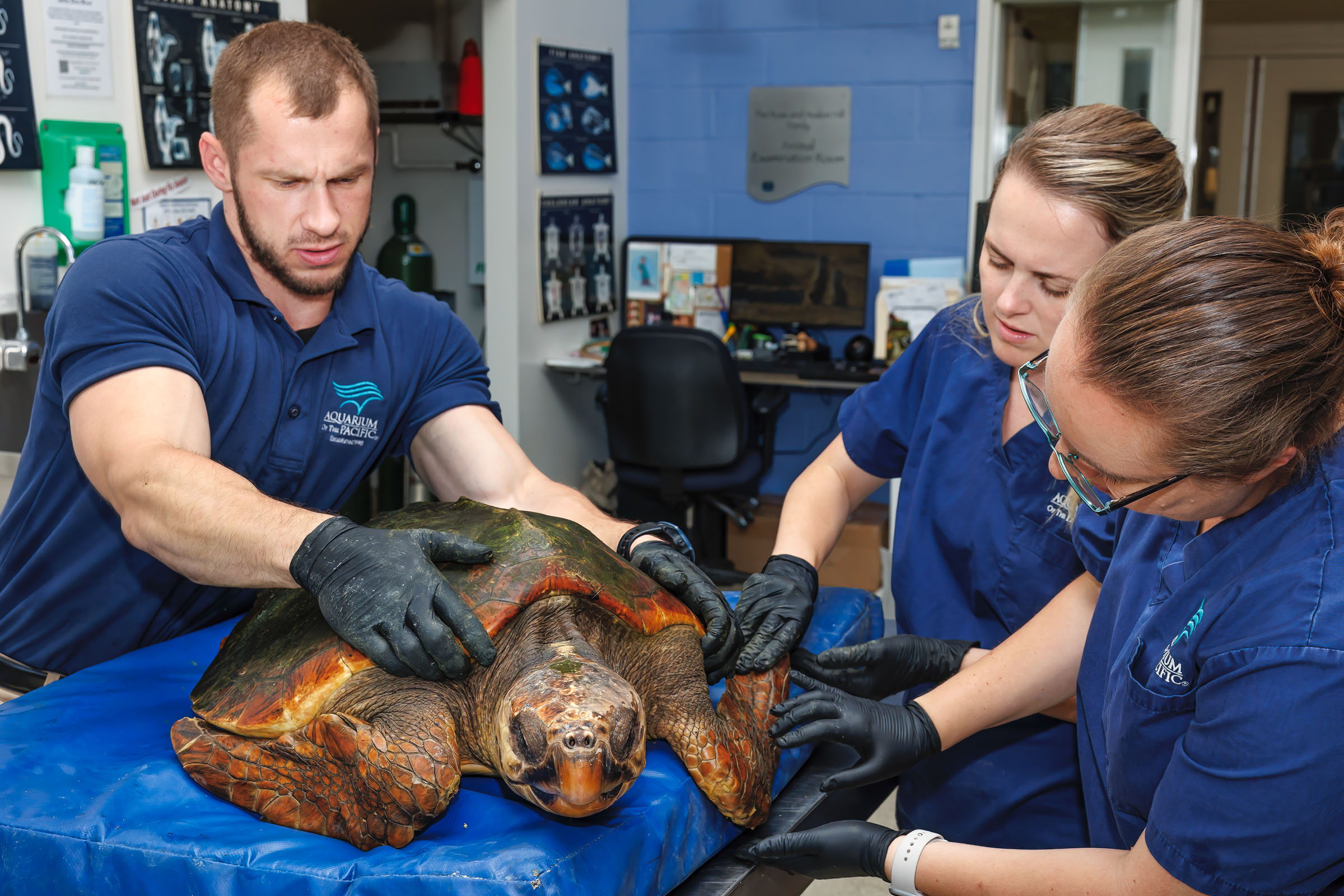
Caring for Animals Like Family
Happy, healthy, and thriving animals create a foundation for trust and connectedness that exists between the husbandry staff and the animals that they care for daily. They are like family, and like family we care deeply for each of them, striving to provide the best possible care, well-being and quality of life. The impact of the Aquarium’s animal welfare practices can be seen and experienced in the Pacific Visions Theater film, Love & Life Beyond the Glass.
As Smylie and the other animal care staff clean their stations and habitats around the Aquarium for the next day, they get ready to return to their own families. But even then thinking about their Aquarium family is never far from their minds.